How do you define the league’s Most Valuable Goaltender?
By figuring out which starting keeper is the biggest difference-maker for his team. We’ll get into how shortly. But let’s start with what Most Valuable Goaltender isn’t.
Most Valuable Goaltender VS Vezina
Most Valuable Goaltender isn’t a replacement for the Vezina Trophy. Instead, it’s a simple, statistically-driven honor, and as you’ll see, a useful supplement for the official selection of the sport’s top netminder.
At the Olympic break, Ben Bishop was leagues ahead of everybody else for MVG. However, some regression and an end-of-the-season injury has put Bishop and his competitors in the same ballpark.
Last year’s MVG rankings revealed Evgeni Nabokov’s unappreciated value, while finding Tuukka Rask and Carey Price’s potential Vezina candidacies somewhat wanting.
Calculating Most Valuable Goaltender
Here’s the fine print: The value of a team’s Starter versus their Other Goalies is measured by Most Valuable Goaltender Points (MVG Points). MVG Points are derived from the sum of Save Percentage and Points Earned Differentials (between Starter and Other Goalies). Save Percentage is a fair in-team comparable because the Starter and Other Goalies perform behind roughly the same teammates; Points Earned also judges internal productivity with similar teammates. Starter MVG Points are then compared throughout the league.
2013-14 Most Valuable Goaltender Rankings
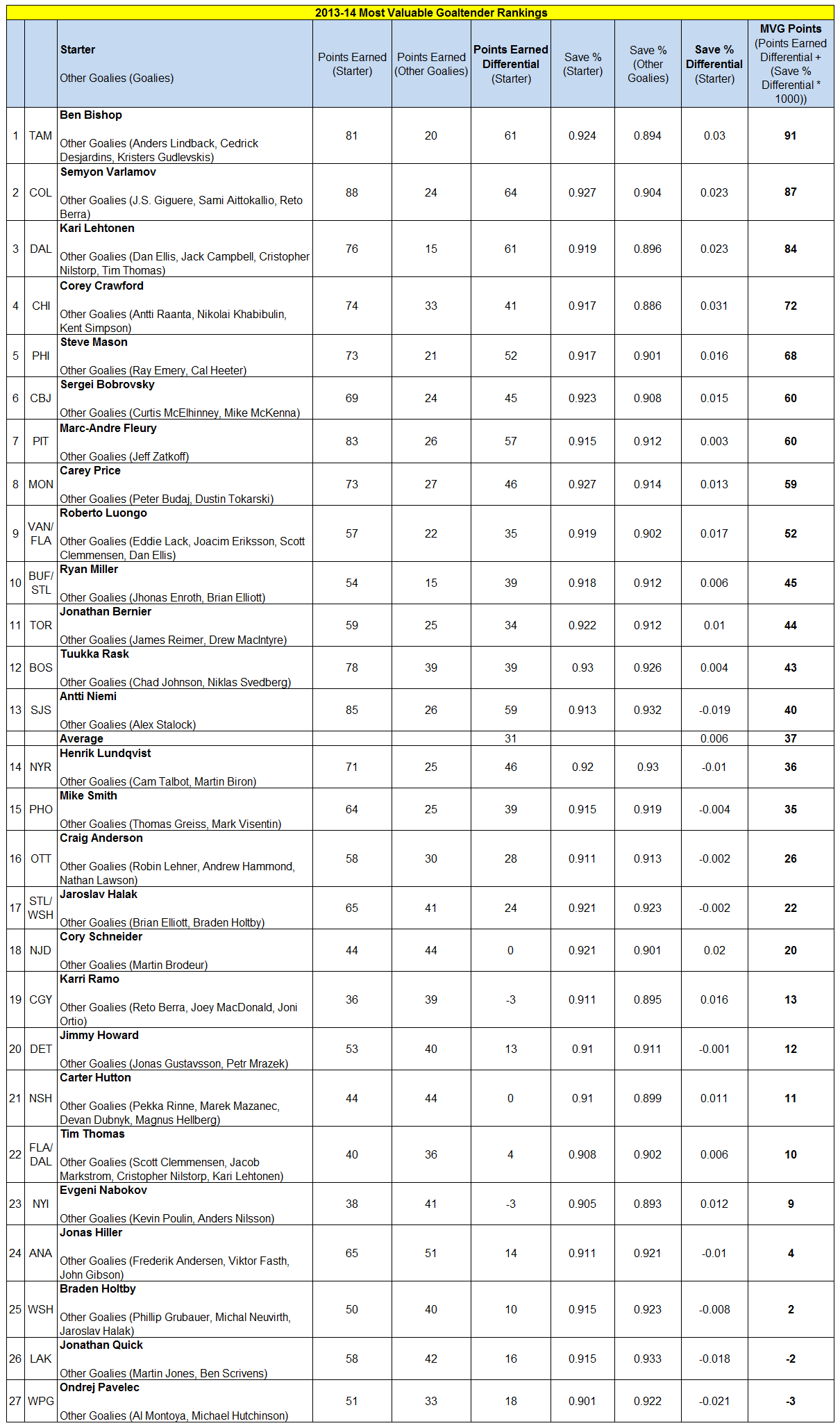
- Does this mean that Ondrej Pavelec and Jonathan Quick are goalies of the same caliber? Of course not. But after two uneven regular seasons, Quick’s status as an elite netminder is, more than in question, perhaps answered. While Scrivens and Jones aren’t necessarily better—they haven’t proven to have the concentration to sustain their gaudy numbers for an entire regular season—the 2012 Vezina finalist is clearly underperforming relative to his backups (and by extension, team defense). Quick should put up numbers similar to Rask’s (another goalie behind a stifling team defense), except he’s not as consistent.
- Some starters, like Ryan Miller, Jaroslav Halak, Roberto Luongo, and Tim Thomas, were traded in season. How did I calculate their respective MVGs? Let’s take Miller as an example. His Buffalo Points Earned Differential was taken from the start of the season until his departure; his St. Louis Points Earned Differential from his arrival there until the end of the season. His Save Percentage Differential comes from a combination of Sabres and Blues goalies and how they performed when Miller was on those teams:
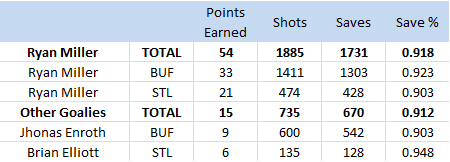
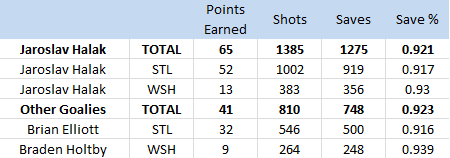
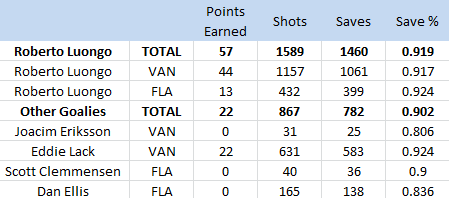
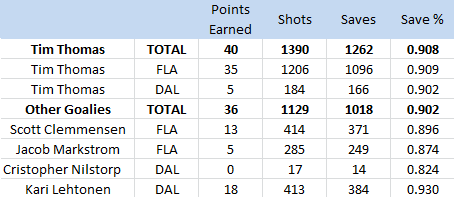
- You might notice the absence of Ben Scrivens and Eddie Lack. Their MVG numbers were too skewed by having played a good part of the season as the backup, so it didn’t seem fair to put them on this list. However, if you look at how Scrivens compares to his Other Goalies, you’ll see that he didn’t have quite as good of a season as you might have thought:
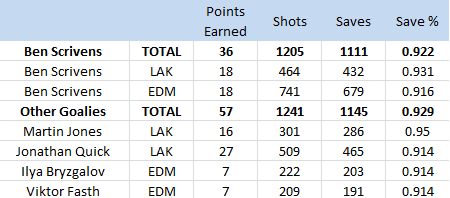
- Carolina and Minnesota don’t have a representative on this list because none of their goalies played enough games. However, I crunched numbers between Anton Khudobin and Cam Ward, and the results are hilarious (Khudobin MVP Points: +14, Ward MVG Points: -56). For Minnesota, Josh Harding was clearly the team’s MVG.